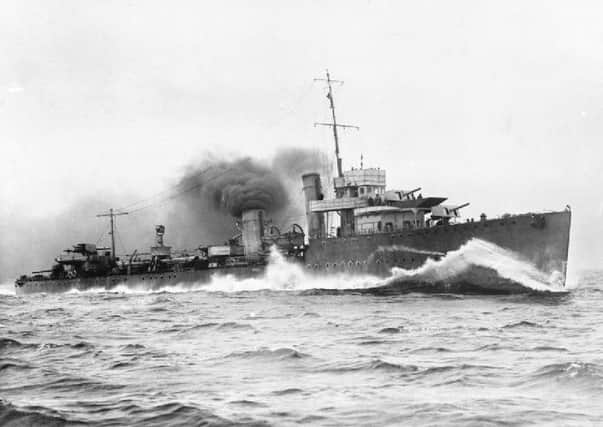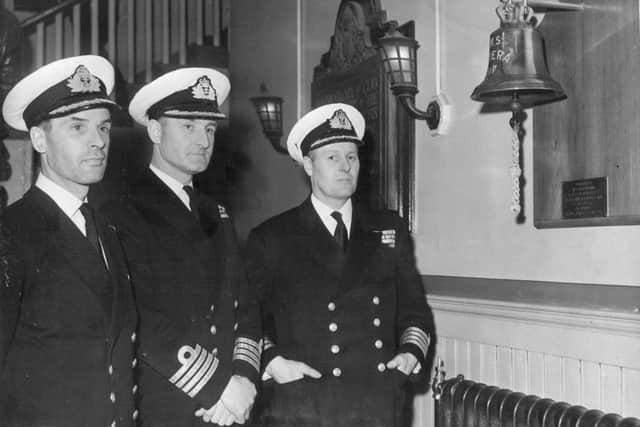Hunt for missing bell from WWII shipwreck that killed 20 Scots


The HMS Vimiera sank in January 1942 when it struck a mine in the Thames Estuary in England, killing 93 crewmen, including around 20 Scottish sailors.
Salvagers managed to rescue the bell from the wreck and it was bought at auction by former captain Rodger Hicks.
Advertisement
Hide AdAdvertisement
Hide AdIt was then presented to the Royal Naval Volunteer Reserve base HMS Graham in the Govan area of Glasgow in remembrance of those who died in the tragedy.


But after HMS Graham was relocated to HMS Dal Riada in Greenock, Inverclyde, the bell went missing.
And now members of the association dedicated to the Vimiera and its sister warships are trying to track the bell down.
Retired naval officer Frank Donald, of the V and W Destroyer Association, said: “We have contacted HMS Dalriada and they have found four different bells, but none is from HMS Vimiera.
“Somebody may have taken it for a souvenir, or for a safekeeping. It may be in a pub somewhere.”


The HMS Vimiera was a battleship built for service during the First World War but later saw action during the Second World War in the 1940s.
The ship was sent to fight in the brutal Battle of Boulogne on the coast of northern France in 1940, where the Royal Navy struggled to evacuate the Welsh Guards in the days leading up to Dunkirk.
It sailed into the harbour under heavy fire from German artillery ashore and the Luftwaffe above, but was able to evacuate 1,400 men despite the damage.